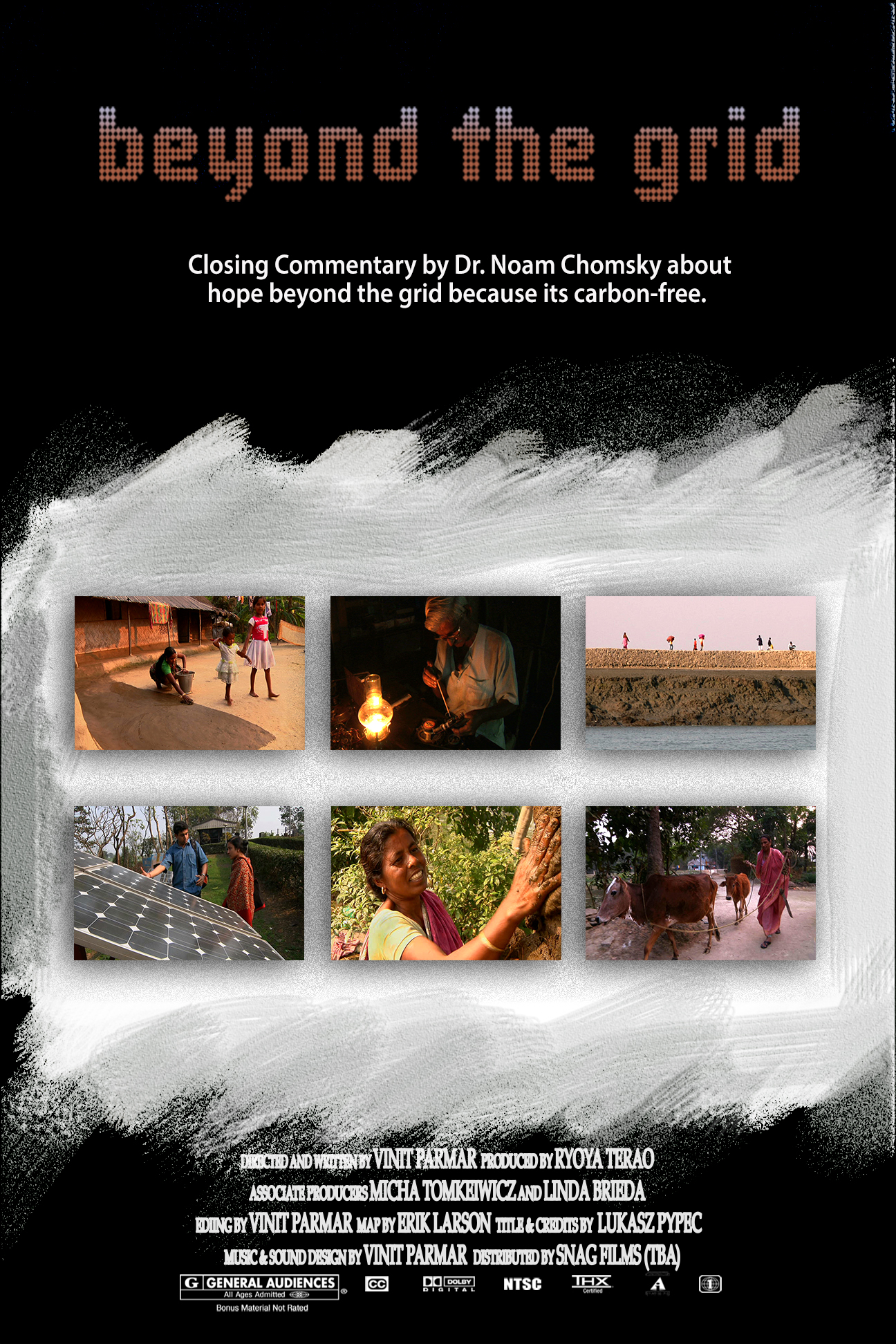Film Notes Personnel Screenings & Awards

Off-grid Indian islanders make a remarkable energy shift to thrive emission-free.
This ethnographic portrayal poetically captures the lives of impoverished, remote island villagers in India. They have lived without electricity for eons, and now, quite possibly they are the first developing village to switch to renewable energy.
Anthropogenic in approach, we appreciate the deep but subtle ties the villagers have to their resources. We witness their energy transition as they tap the Earth’s resources to achieve sustainability while developing their lives. The film offers hope In this climate change era, we are hopeful for the 1.5 billion other off-grid inhabitants of the world who still need electricity.
Beyond the Grid introduces us to the way all humans once lived without electricity, and instills in us the hope that if impoverished villagers can become sustainable and lower their carbon footprint, the rest of the world can follow.
We witness simple village life. The villagers are in harmony with their environment, their ecology, and they rely on their local resources to survive. The simple act of cooking is laborious. Wood must be sought, cut, cleaned, carried and stored. Burning wood is creates pollution and is harmful. For cooking, burning firewood and kerosene, caused burns and even deaths and smoke inhalation problems. Yet, if they burned fossil fuels to develop, it would exacerbate the effects of climate change.
Change is in the air. The State of West Bengal introduces an Energy Park where residents get excited about adopting alternative solutions for sustainable development. In a town hall meeting of village chieftains representing four million inhabitants of the Sundarbans, they vote to acquire clean energy.
Now, three of the fifty-two occupied islands have electricity from a hybrid mini-grid power plant that uses wood to make emission-free biogas. Replenishment of used wood through replantation of new trees makes this process sustainable.
A man survived a tiger attack when he called for help on his charged mobile phone. Islanders power their homes and appliances and even boats from solar-charged batteries. On straw thatched hut rooftops sit solar panels. Children study without breathing foul-smelling gas from kerosene lights, and use computers and connect to the Internet.
Manure pits supply natural cooking gas from fermented cow manure for an emission-free, safe and clean cooking experience. Emergency medical care, vital-sign machines, vaccinations and immunizations for children are available now. Nightlife booms and business soars as the exploding economy helps the community sustain itself.
Sustainable choices have saved lives, transforming an off-grid village into a thriving town of entrepreneurs bustling with energy and the modernity of appliances, entertainment, and technology. With the right investment, this grass-roots movement created jobs, reduced greenhouse emissions and enriched a generation to enter the new world. Imagine what is possible for the world of 1.5 off-grid billion inhabitants, desperate and in the dark.